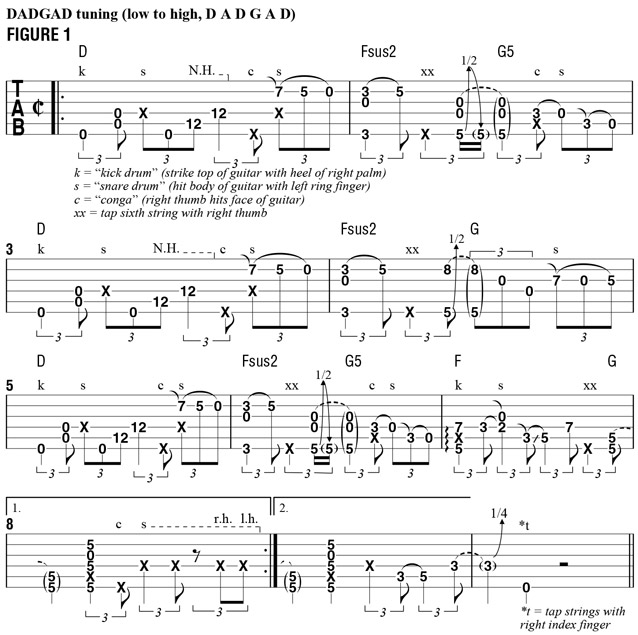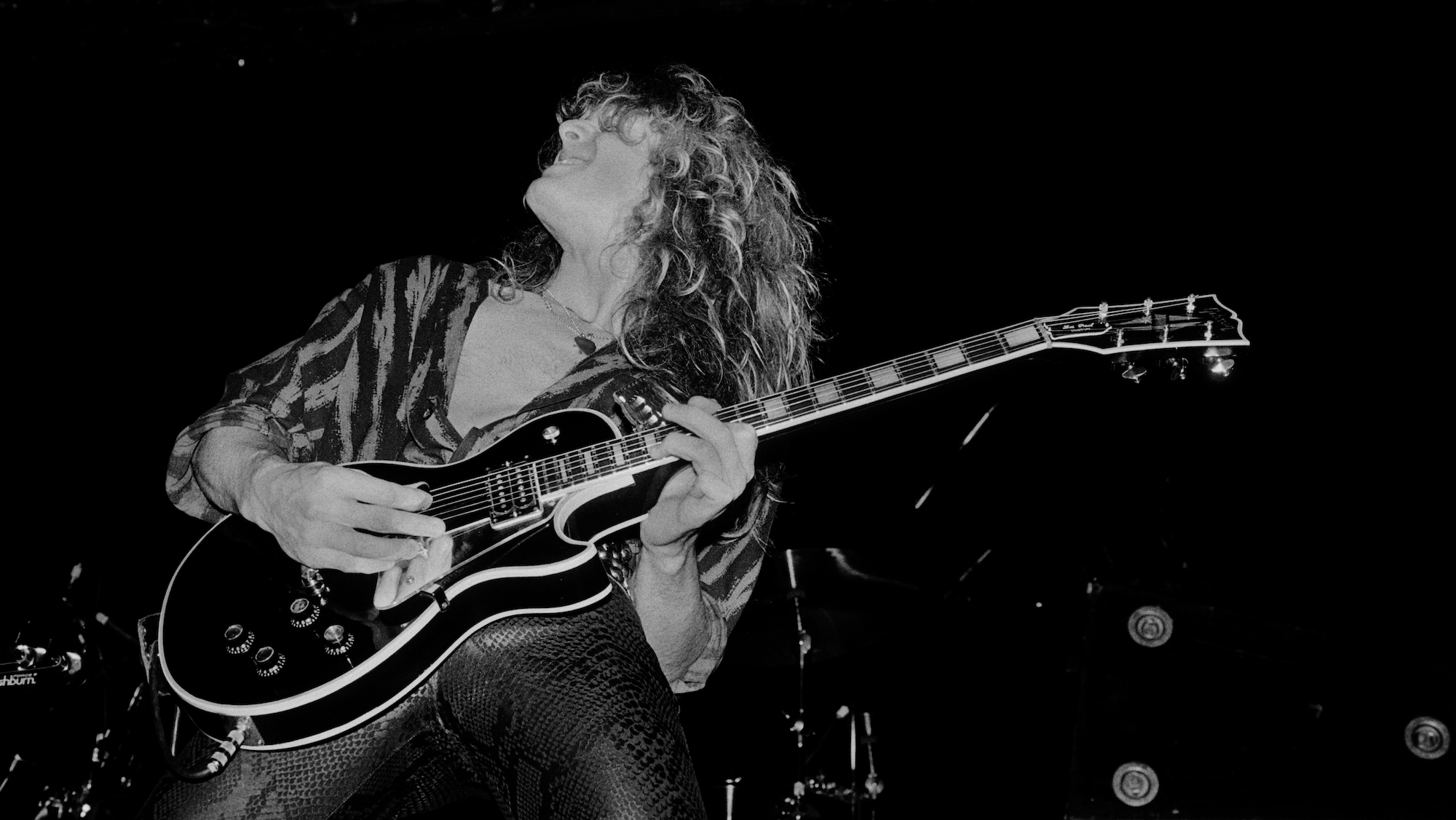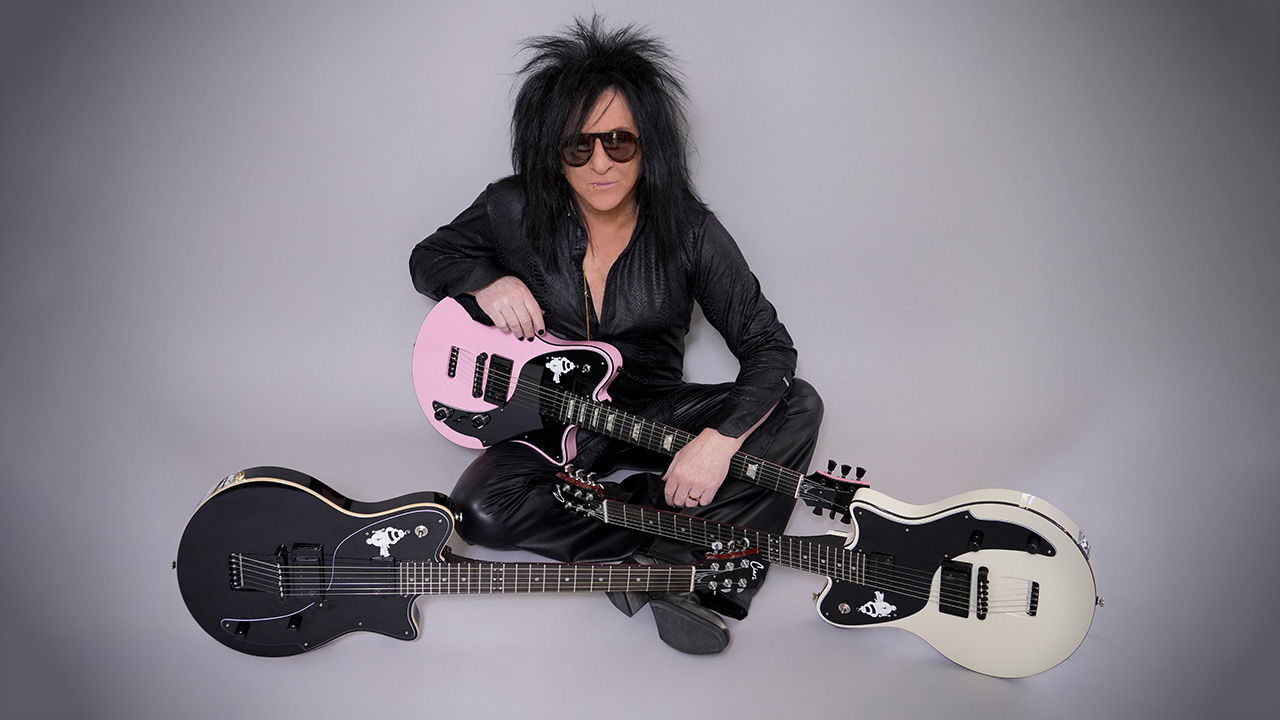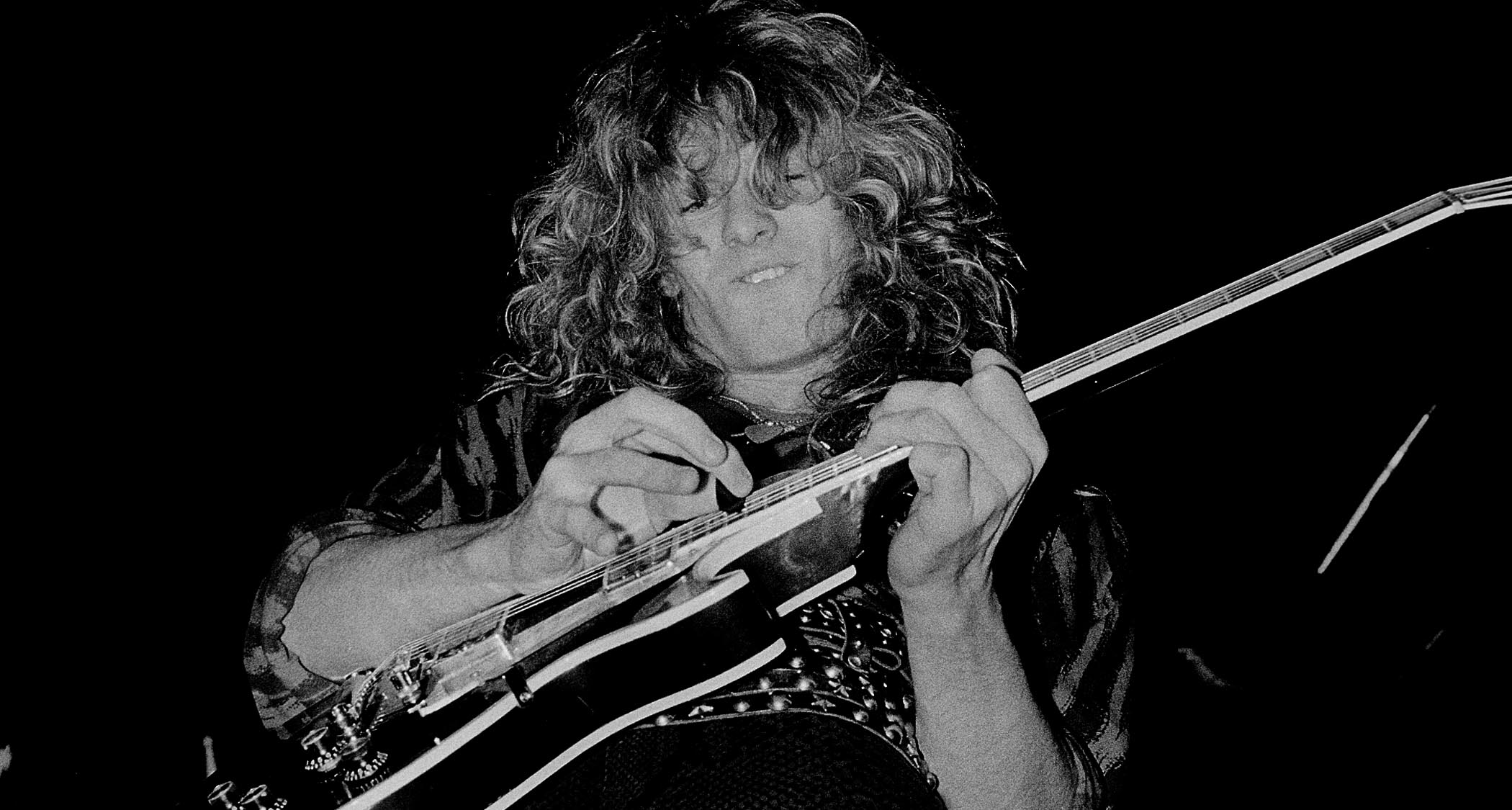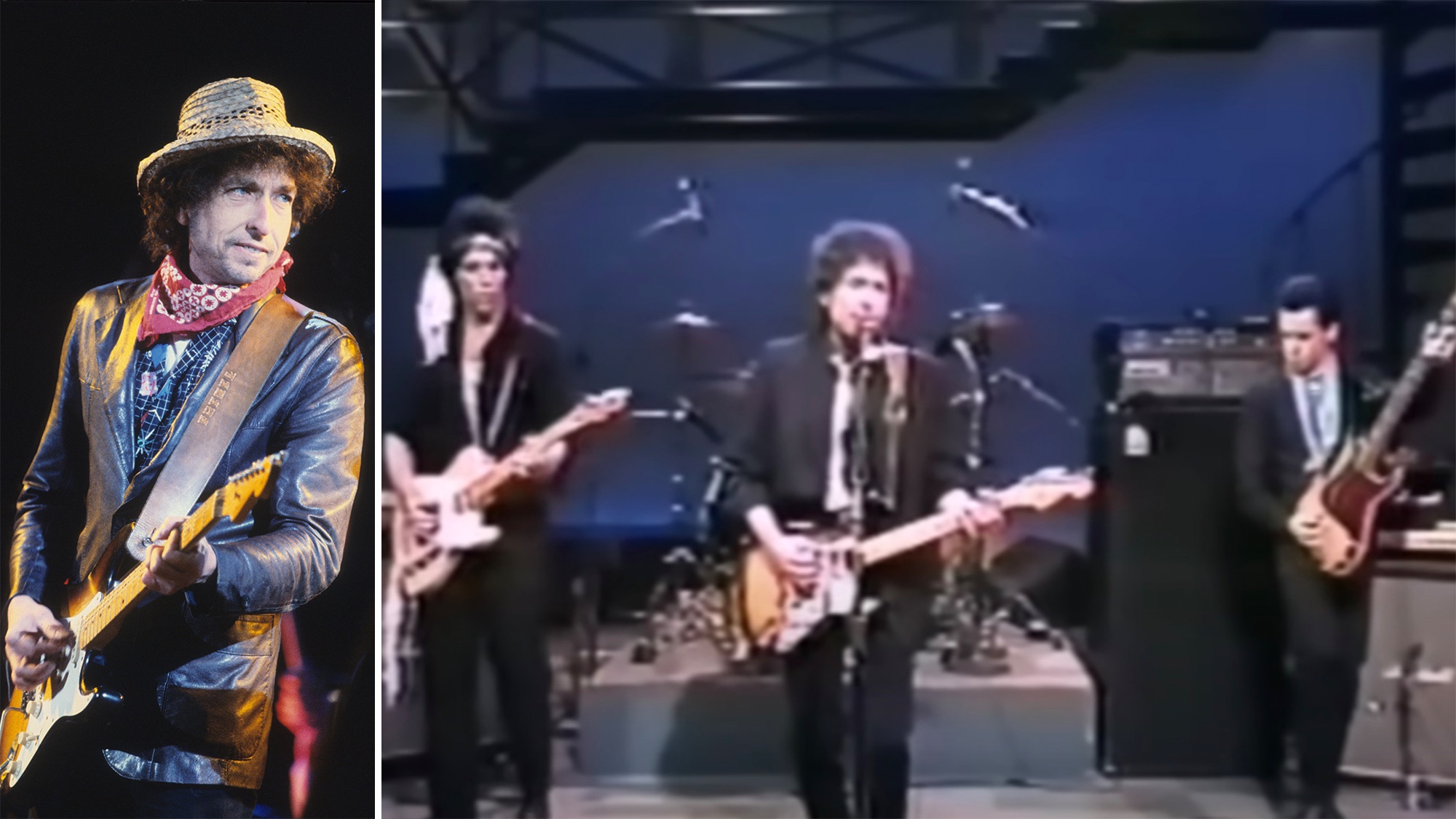Boogie Shred: Exploring Percussive Acoustic Guitar Techniques

People often ask me how to play "Boogie Shred" from my album What Just Happened?
“Boogie Shred” is the first song I ever wrote. It’s my “teenage rock song,” borne out of an electric guitarist learning the acoustic guitar. It’s also the first song I ever composed on a steel-string acoustic. I wrote it shortly after I’d gotten my very first steel-string at the age of 17.
The tune is performed in DADGAD tuning (low to high: D A D G A D) and is inspired by and a tribute to the playing of the late, great guitarist Eric Roche, whose music I first discovered in the early days of YouTube, around 2005-2006. I purchased Eric’s Live at the Electric DVD, which absolutely blew my mind.
FIGURE 1 illustrates the first 16 bars of “Boogie Shred,” which encompasses the tune’s primary riffs. For this passage, which commences after the initial eight bars are played, the first seven bars are repeated, after which I jump to a “second ending,” which is two bars long in FIGURE 1. An integral part of the riff is the incorporation of intertwining percussive sounds, produced by striking different areas of the guitar with either hand.
These percussive hits are all strategically placed, with some standing on their own as distinct, individual sounds and others occurring simultaneously with a note. The sequence of these percussive sounds is rather detailed and varies in each bar, so let me walk you through the passage bar by bar.
Harmonically, the song is rather simple, as it begins with a D5 power chord and then moves to F5 and G5. Structurally, I look at the composition as having four lines: a call, a response, another call, and then another response. This type of form is often referred to as “ABAC,” the letters signifying phrases, or sections, not chord names. Let’s first look at “A,” which encompasses bars 1 and 2: I begin with my pick-hand thumb and index and middle fingers resting on the bottom three strings and pick the open sixth string while striking the guitar’s body with my palm, creating a kick drum-type sound (indicated with a K).
I then pick the open fifth and fourth strings together. On beat two, I tap on the body with my fret-hand index finger, producing a “snare” sound, indicated by an S. (Be sure to lay the edge of your pick hand across the string to mute it.) This is followed by the open sixth string and then natural harmonics (N.H.) at the 12th fret on the fifth and fourth strings. On the upbeat of beat three, I create a “conga” sound (indicated with a C) by tapping the face of the guitar with my pick-hand thumb, followed by a snare hit on the lower side of the guitar body, which occurs simultaneously with a ring-finger hammer-on to the second string’s seventh fret, which I follow with a double pull-off to the fifth fret and the open string.
Get The Pick Newsletter
All the latest guitar news, interviews, lessons, reviews, deals and more, direct to your inbox!
In bar 2, I follow Fsus2 with a tap onto the sixth string with my pick-hand thumb, which lands squarely on beat two; I then sound a low G note on that string’s fifth fret along with the open fourth and third strings and quickly bend and release the G, with another “conga” hit occurring on the upbeat of beat three. Bar 3 is a repetition of bar 1, and bar 4 supplies a twist on the bar-2 figure, with a bend at the eighth fret on the second string, followed by open-string hammer-ons and pull-offs. Bars 5 and 6 repeat bars 1 and 2, and the last part of the riff is built primarily from octave shapes played on the sixth and fourth strings, with subtle melodic movement added.
This is a fun but challenging piece to play, so proceed slowly at first and work through each bar carefully, gradually weaving the different elements together into a cohesive whole.
